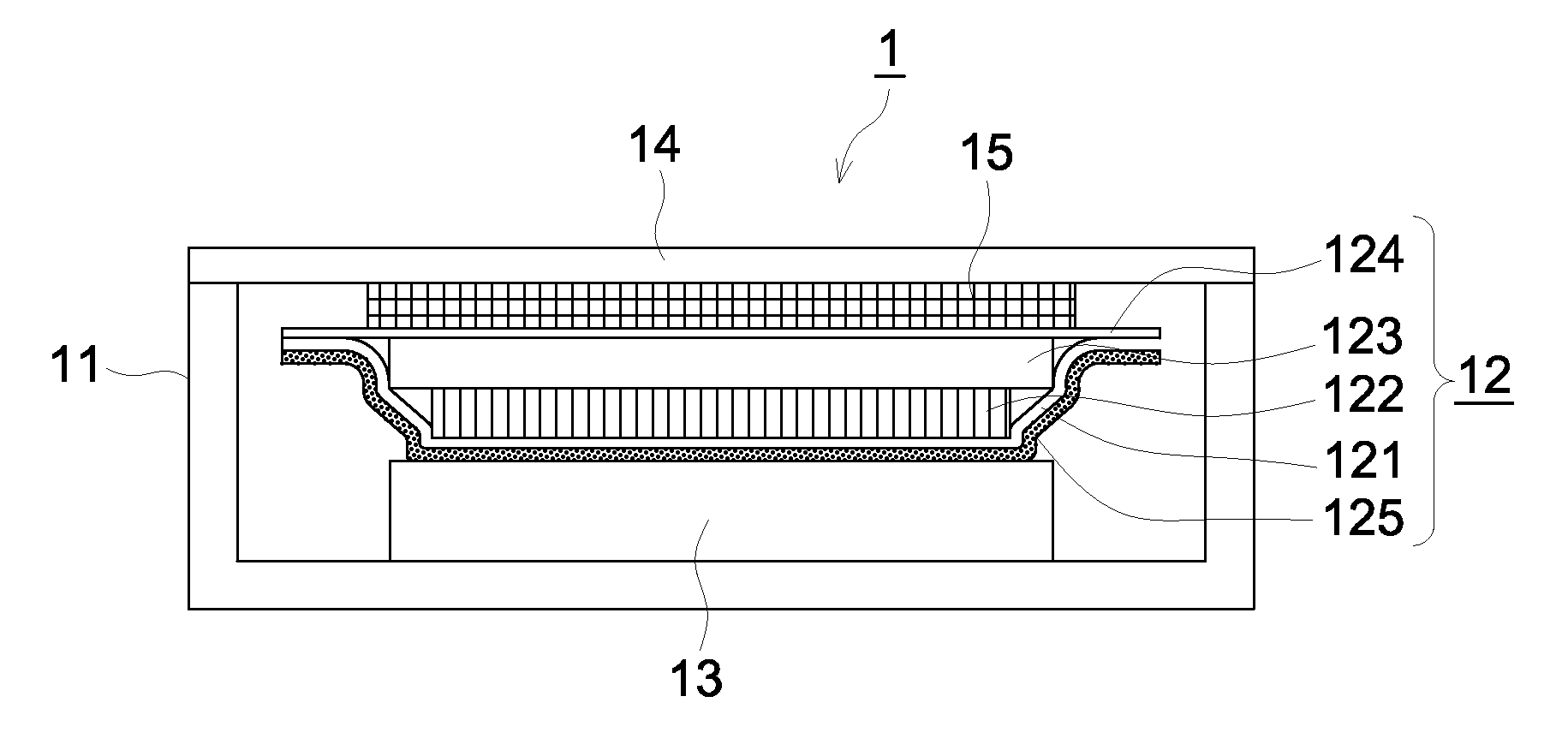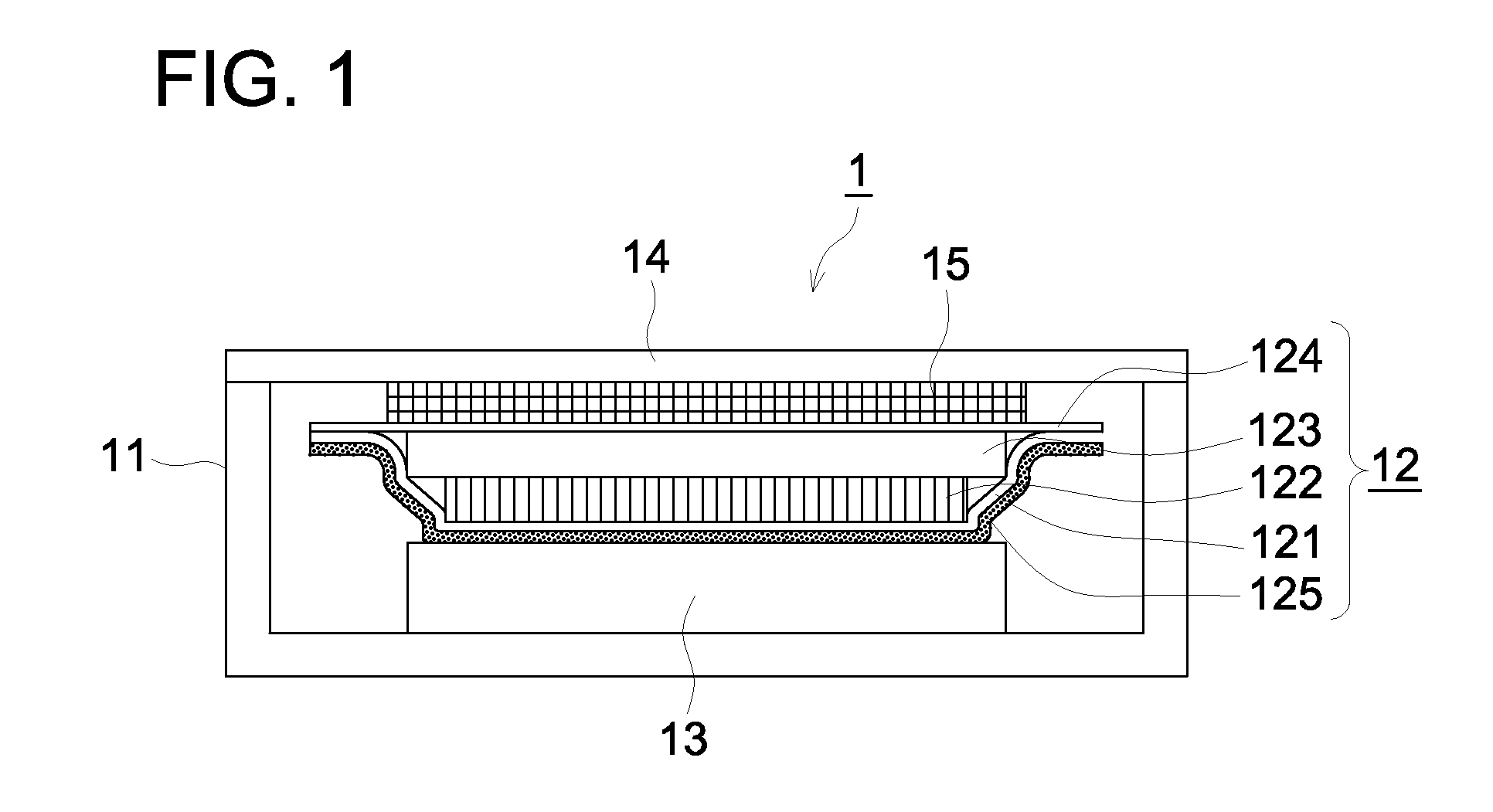Flat Panel Detector
a detector and flat panel technology, applied in the field of flat panel detectors, can solve the problems of insufficient spatial resolution, insufficient image sharpness, inability to realize free image processing or instantaneous image transfer, etc., and achieve the effect of preventing aging and deterioration of characteristics
- Summary
- Abstract
- Description
- Claims
- Application Information
AI Technical Summary
Benefits of technology
Problems solved by technology
Method used
Image
Examples
examples
[0074]The present invention will be specifically described with reference to examples but is not limited to these. In the examples, expression of “%” represents “% by mass” unless otherwise noted.
example
Preparation of Scintillator Plate
Preparation of Substrate:
[0075]There were prepared 125 μm and 225 μm thick polyimide films (250×300 mm).
Formation of Phosphor Layer:
[0076]Using a vapor deposition apparatus, a phosphor (CsI:0.3% Tl) was formed on prepared polyimide film by a process of vapor deposition to prepare a scintillator, as described below.
[0077]A phosphor raw material (CsI:0.3% Tl) was loaded into a resistance heating crucible, polyimide film was set on a supporting holder, and the distance between the resistance heating crucible and an aluminum plate was adjusted to 400 mm. Subsequently, the interior of the vapor deposition apparatus was evacuated and after argon gas was introduced thereto and the vacuum degree was adjusted to 0.5 Pa, the temperature was maintained at 150° C., while rotating the polyimide film at a rate of 10 rpm. Subsequently, the resistance heating crucible was heated to allow the phosphor to be deposited and when the phosphor layer thickness reached 400 ...
PUM
 Login to View More
Login to View More Abstract
Description
Claims
Application Information
 Login to View More
Login to View More - R&D
- Intellectual Property
- Life Sciences
- Materials
- Tech Scout
- Unparalleled Data Quality
- Higher Quality Content
- 60% Fewer Hallucinations
Browse by: Latest US Patents, China's latest patents, Technical Efficacy Thesaurus, Application Domain, Technology Topic, Popular Technical Reports.
© 2025 PatSnap. All rights reserved.Legal|Privacy policy|Modern Slavery Act Transparency Statement|Sitemap|About US| Contact US: help@patsnap.com


